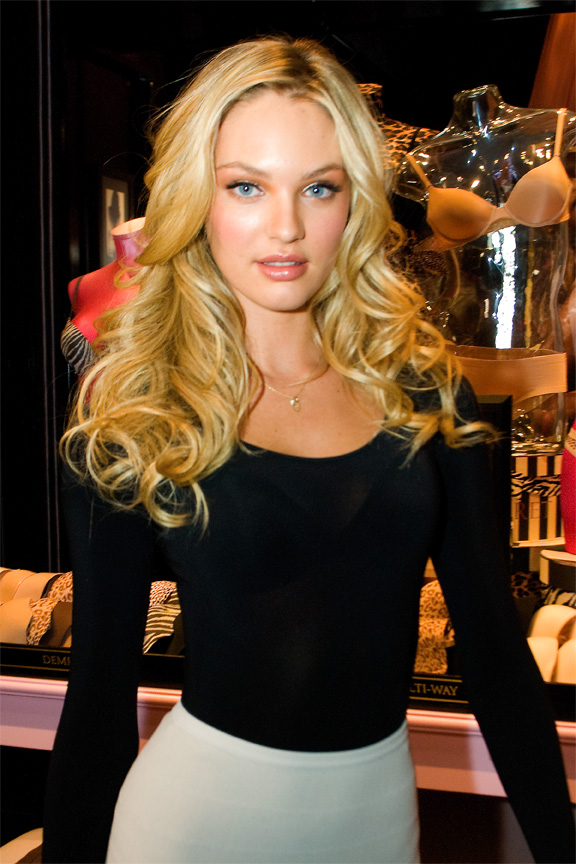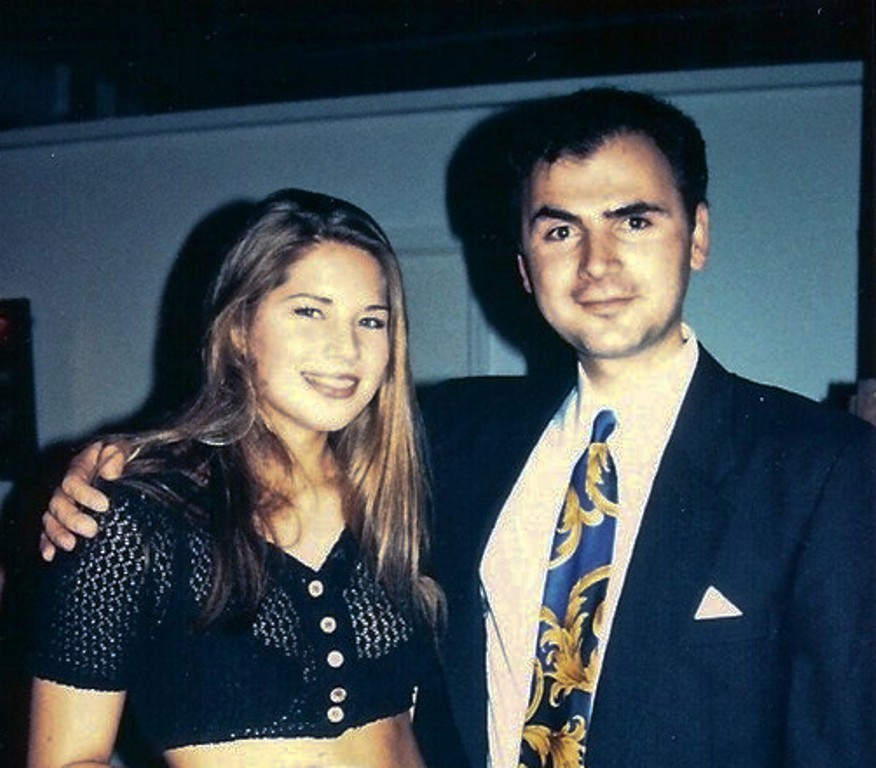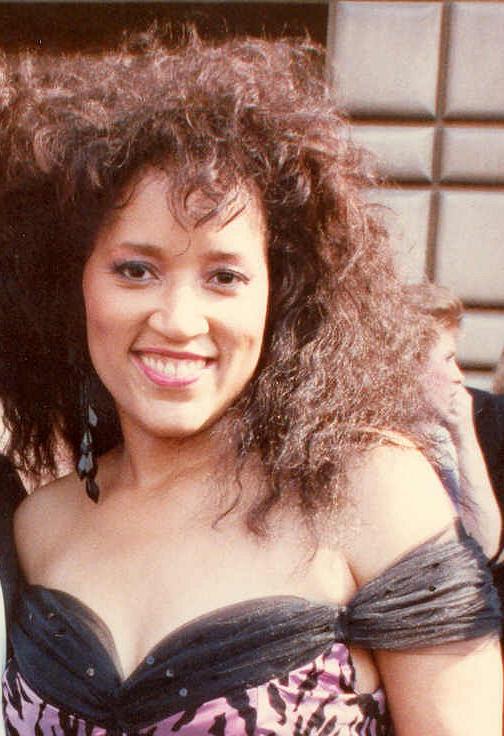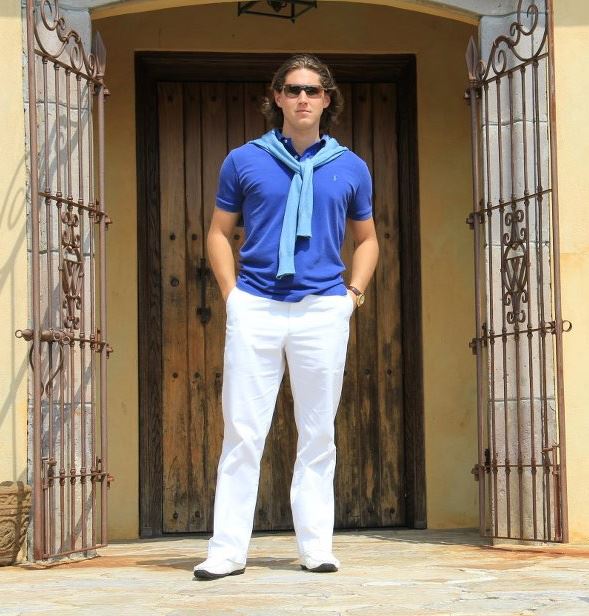|
Bon Chic Bon Genre
Bon chic, bon genre () is an expression used in France to refer to a subculture of stylish members of the Parisian upper class. They are typically well-educated, well-connected, and descended from " old money" families, preferably with some aristocratic ancestry. The style combines certain fashionable tastes with the appearance of social respectability. The expression is sometimes shortened to BCBG (the fashion company BCBG Max Azria was named in reference to the subculture). Parallels are often seen between this subculture and similar upper-class social groups in the United States ("preppy") and the United Kingdom ("Sloane Rangers"). As with those groups, the BCBG subculture drew mainstream attention during the 1980s. Thierry Mantoux published a handbook for BCBG style (''BCBG – Le guide du bon chic bon genre'') in 1985. It was a French equivalent to ''The Official Preppy Handbook'' and ''The Sloane Ranger Handbook'', both published earlier in the decade. The BCBG social group ... [...More Info...] [...Related Items...] OR: [Wikipedia] [Google] [Baidu] |
Subculture
A subculture is a group of people within a culture that differentiates itself from the parent culture to which it belongs, often maintaining some of its founding principles. Subcultures develop their own norms and values regarding cultural, political, and sexual matters. Subcultures are part of society while keeping their specific characteristics intact. Examples of subcultures include BDSM, hippies, goths, bikers, punks, skinheads, hip-hoppers, metalheads, and cosplayers. The concept of subcultures was developed in sociology and cultural studies. Subcultures differ from countercultures. Definitions The ''Oxford English Dictionary'' defines subculture, in regards to sociological and cultural anthropology, as "an identifiable subgroup within a society or group of people, esp. one characterized by beliefs or interests at variance with those of the larger group; the distinctive ideas, practices, or way of life of such a subgroup." As early as 1950, David Riesman distinguished b ... [...More Info...] [...Related Items...] OR: [Wikipedia] [Google] [Baidu] |
Gucci
Gucci (, ; ) is an Italian high-end luxury fashion house based in Florence, Italy. Its product lines include handbags, ready-to-wear, footwear, accessories, and home decoration; and it licenses its name and branding to Coty, Inc. for fragrance and cosmetics under the name Gucci Beauty. Gucci was founded in 1921 by Guccio Gucci (1881–1953) in Florence, Tuscany. Under the direction of Aldo Gucci (son of Guccio), Gucci became a worldwide-known brand, an icon of the Italian ''Dolce Vita''. Following family feuds during the 1980s, the Gucci family was entirely ousted from the capital of the company by 1993. After this crisis, the brand was revived with a provocative 'Porno Chic' props. In 1999, Gucci was acquired by the French conglomerate Pinault Printemps Redoute, which later became Kering. During the 2010s, Gucci became an iconic ' geek-chic' brand. In 2019, Gucci operated 487 stores for 17,157 employees, and generated €9.628 billion in sales (€8.2 billion in 2018). Marco ... [...More Info...] [...Related Items...] OR: [Wikipedia] [Google] [Baidu] |
2010s Fashion
The 2010s were defined by hipster fashion, athleisure, a revival of austerity-era period pieces and alternative fashions, swag-inspired outfits, 1980s-style neon streetwear, and unisex 1990s-style elements influenced by grunge and skater fashions. The later years of the decade witnessed the growing importance in the western world of social media influencers paid to promote fast fashion brands on Pinterest and Instagram. Popular global fashion brands of the decade included Abercrombie and Fitch, Adidas, Balenciaga, Ben Sherman, Burberry, Christian Dior, Coach, DSquared2, Dorothy Perkins, Fashion Nova, Forever 21, Gucci, H&M, Hollister, Hugo Boss, Lacoste, Louis Vuitton, Marks and Spencer, Michael Kors, Monsoon Accessorize, Nike, Nine West, Off-White, River Island, Supreme, Topman, Topshop, Uniqlo, Under Armour, and Vans. Designers and models The leading European and American designers of the early 2010s included Nicolas Ghesquière, Miuccia Prada, Frida Giannini, Ma ... [...More Info...] [...Related Items...] OR: [Wikipedia] [Google] [Baidu] |
2000s Fashion
2000s fashion is often described as being a global mash up, where trends saw the fusion of vintage styles, global and ethnic clothing (e.g. boho), as well as the fashions of numerous music-based subcultures. Hip-hop fashion generally was the most popular among young people of all sexes, followed by the retro inspired indie look later in the decade. Those usually age 25 and older adopted a dressy casual style which was popular throughout the decade. Globalization also influenced the decade's clothing trends, with the incorporation of Middle Eastern and Asian dress into mainstream European, American and Australasian fashion. Furthermore, eco-friendly and ethical clothing, such as recycled fashions and fake fur, were prominent in the decade. In the early 2000s, many mid and late 1990s fashions remained fashionable around the globe, while simultaneously introducing newer trends. The later years of the decade saw a large-scale revival of clothing designs primarily from the 1960s, ... [...More Info...] [...Related Items...] OR: [Wikipedia] [Google] [Baidu] |
1990s Fashion
Fashion in the 1990s was defined by a return to minimalist fashion, in contrast to the more elaborate and flashy trends of the 1980s. One notable shift was the mainstream adoption of tattoos, body piercings aside from ear piercing and, to a much lesser extent, other forms of body modification such as branding. In the early 1990s, several late 1980s fashions remained very stylish among both sexes. However, the popularity of grunge and alternative rock music helped bring the simple, unkempt grunge look to the mainstream by 1994. The anti-conformist approach to fashion led to the popularization of the casual chic look that included T-shirts, jeans, hoodies, and sneakers, a trend which continued into the 2000s. Additionally, fashion trends throughout the decade recycled styles from previous decades, notably the 1950s, 1960s and 1970s. Due to increased availability of the Internet and satellite television outside the United States, plus the reduction of import tariffs under NAFTA, ... [...More Info...] [...Related Items...] OR: [Wikipedia] [Google] [Baidu] |
1980s Fashion
Fashion of the 1980s was characterized by a rejection of 1970s fashion. Punk fashion began as a reaction against both the hippie movement of the past decades and the materialist values of the current decade. The first half of the decade was relatively tame in comparison to the second half, which was when apparel became very bright and vivid in appearance. Hair in the 1980s was typically big, curly hair, curly, bouffant and heavily styled. Television shows such as ''Dynasty (1981 TV series), Dynasty'' helped popularize the high volume bouffant and glamorous image associated with it. Women in the 1980s wore bright, heavy makeup. Everyday fashion in the 1980s consisted of light-colored lips, dark and thick eyelashes, and pink or red rouge (cosmetics), rouge (otherwise known as blush). Some of the top fashion models of the 1980s were Brooke Shields, Christie Brinkley, Gia Carangi, Joan Severance, Kim Alexis, Carol Alt, Yasmin Le Bon, Renée Simonsen, Kelly Emberg, Inès de La Fressa ... [...More Info...] [...Related Items...] OR: [Wikipedia] [Google] [Baidu] |
1970s Fashion
Fashion in the 1970s was about individuality. In the early 1970s, ''Vogue'' proclaimed "There are no rules in the fashion game now" due to overproduction flooding the market with cheap synthetic clothing. Common items included mini skirts, bell-bottoms popularized by hippies, vintage clothing from the 1950s and earlier, and the androgynous glam rock and disco styles that introduced platform shoes, bright colors, glitter, and satin. New technologies brought advances in production through mass production, higher efficiency, generating higher standards and uniformity. Generally the most famous silhouette of the mid and late 1970s for both genders was that of tight on top and loose on bottom. The 1970s also saw the birth of the indifferent, anti-conformist casual chic approach to fashion, which consisted of sweaters, T-shirts, jeans and sneakers. The French designer Yves Saint Laurent and the American designer Halston both observed and embraced the changes that were happening in ... [...More Info...] [...Related Items...] OR: [Wikipedia] [Google] [Baidu] |
Ethnic Groups In France
The demography of France is monitored by the Institut national d'études démographiques (INED) and the Institut national de la statistique et des études économiques (INSEE). As of 1 January 2021, 65,250,000 people lived in Metropolitan France, while 2,785,000 lived in overseas France, for a total of 68,035,000 inhabitants in the French Republic.Population of Metropolitan France The population of all five overseas departments totaled 2,172,00in January 2021. The population of the overseas collectivities amounted to 613,000 inhabitants (Saint-Pierre and Miquelo Saint-Barthélem Saint-Marti French Polynesi Wallis et Futun New Caledoni. The total population of the overseas departments and territories of France is estimated at 2,785,000. In March 2017, the population of France officially reached the 67,000,000 mark. It had reached 66,000,000 in early 2014. Between the years 2010–17, the population of France grew from 64,613,000 to 66,991,000 (i.e. about 2.4 million people in a ... [...More Info...] [...Related Items...] OR: [Wikipedia] [Google] [Baidu] |
Preppy
Preppy (also spelled preppie) or prep (all abbreviations of the word ''preparatory'') is a subculture in the United States associated with the alumni of old private Northeastern college preparatory schools. The terms are used to denote a person seen as characteristic of a student or alumnus of these schools. Characteristics of preps in the past include a particular subcultural speech, vocabulary, dress, mannerisms and etiquette, reflective of an upper-class, old money upbringing. Definition The term ''preppy'' derives from the private, university-preparatory schools ("prep schools") that some American upper class and upper middle class children attend. The term ''preppy'' is commonly associated with the Ivy League and broader group of oldest universities in the Northeast as well as the prep schools which brought students to them, since traditionally a primary goal in attending a prep school was admittance into one of these institutions. Preppy fashion derives from the fash ... [...More Info...] [...Related Items...] OR: [Wikipedia] [Google] [Baidu] |
Tout-Paris
Le Tout-Paris ("everyone in Paris") is a French expression referring to the fashionable and affluent elite of the city, who frequent fashionable events and places, and establish trends in upper-class culture. It is equivalent to the "jet set" elsewhere. History The expression ''tout-Paris'' was used in the 17th century to refer to "high society" among the aristocratic inhabitants of the city of Paris. It was used in 1660 by Nicolas Boileau in his ''Satires'' to refer to the influential members of Paris society who made Pierre Corneille's play El Cid popular, in the famous sentence, "In vain, a minister sought support against El Cid—Tout Paris supported Chimene in love with Rodrigue" Boileau also used the expression in ''Chant III'': "Where tout Paris as a crowd bears its sufferings". Voltaire and Jean le Rond D'Alembert also used the expression in their correspondence. The current use of the expression ''tout-Paris'' dates from the Belle Epoque era of 19th century Paris. Hi ... [...More Info...] [...Related Items...] OR: [Wikipedia] [Google] [Baidu] |
Clive James's Postcard From
Clive is a name. People and fictional characters with the name include: People Given name * Clive Allen (born 1961), English football player * Clive Anderson (born 1952), British television, radio presenter, comedy writer and former barrister * Clive Barker (born 1952), English writer, film director and visual artist * Clive Barker (artist, born 1940), British pop artist * Clive Barker (soccer) (born 1944), South African coach * Clive Barnes (1927–2008), English writer and critic, dance and theater critic for ''The New York Times'' * Clive Bell (1881–1964), English art critic * Clive Brook (1887–1974), British film actor * Clive Burr (1957–2013), British musician, former drummer with Iron Maiden * Clive Campbell (footballer), New Zealand footballer in the 1970s and early '80s * Clive Campbell (born 1955), Jamaican-born DJ with the stage name DJ Kool Herc * Clive Clark (golfer) (born 1945), English golfer * Clive Clark (footballer) (1940–2014), English former footballer ... [...More Info...] [...Related Items...] OR: [Wikipedia] [Google] [Baidu] |
Clive James
Clive James (born Vivian Leopold James; 7 October 1939 – 24 November 2019) was an Australian critic, journalist, broadcaster, writer and lyricist who lived and worked in the United Kingdom from 1962 until his death in 2019.Clive James — writer, TV broadcaster and critic — dies aged 80 ''ABC News'', 28 November 2019. Retrieved 28 November 2019. He began his career specialising in literary criticism before becoming television critic for ''The Observer'' in 1972, where he made his name for his wry, deadpan humour. During this period, he earned an independent reputation as a poet and satire, satirist. He achieved mainstream success in the UK first as a writer for television, and eventually as the lead in his own programmes, including ''...on Television ... [...More Info...] [...Related Items...] OR: [Wikipedia] [Google] [Baidu] |
.jpg)

.jpg)



